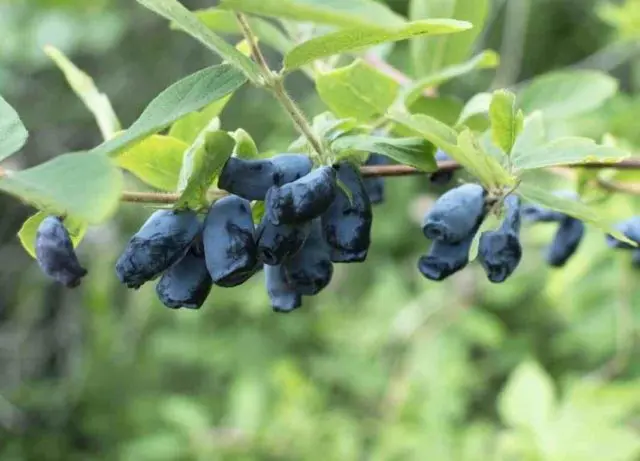Contents
- Features of planting blackcurrant in spring
- When can you plant currants in spring
- How to plant currants in spring
- What can be planted next to blackcurrant
- When the buds wake up on the currant
- How currant blossoms
- When does the currant begin to bear fruit after planting?
- How much does blackcurrant grow
- What frosts can currants withstand?
- Mistakes when growing currants
- Tips from experienced gardeners about planting currants in spring
- Conclusion
It is necessary to plant currants in the spring according to special rules. The shrub makes its own requirements for the time, place and algorithm of planting, only if they are observed, it will grow beautiful and give a bountiful harvest.
Features of planting blackcurrant in spring
Blackcurrant is a very popular shrub in summer cottages. The plant decorates the garden and brings delicious fruits, but it has some features that must be considered when planting.
- The culture loves moisture, but it does not tolerate waterlogging. It should be planted in an area where the soil is always slightly moist, but there is also good drainage.
- The shrub belongs to very early plants, it releases buds and blooms one of the first. Accordingly, it should be planted early, ideally immediately after warming up the soil.
- The culture does not tolerate carbonate and sandy soils. It is not recommended to plant it in dry soil in the spring, even if it can develop, it will have to be very carefully cared for.
- Blackcurrant bushes need regular feeding for good flowering and high-quality fruiting. Although the plant is considered quite hardy, it will not be able to bring large yields on depleted soils. In addition, regular top dressing plays the role of additional protection against diseases and pests – strong, healthy and developed currants are more resistant to fungi and insects and get sick less often.
When planting currants in spring in open ground in groups, it must be taken into account that the shrub grows widely, and, accordingly, when planting, each seedling must be provided with enough living space.
When can you plant currants in spring
In spring, blackcurrant prefers early planting. It is necessary to wait until the soil warms up by about 40 cm deep, and day and night temperatures will stably remain positive – not lower than 5-10 ° C. Usually suitable weather sets in early or mid-April.
How to plant currants in spring
For the correct planting of blackcurrant in the spring, you need to understand which areas it prefers and know the planting algorithm. It is necessary to take into account the requirements of the shrub for the soil and know what can and cannot be planted nearby.
Where to plant blackcurrant
Planting currants in the shade or in the sun is a controversial issue among gardeners. But the best place for a plant is a well-lit, calm area. It is best to choose places where the culture can receive sunlight in the afternoon, but at the same time it will be slightly shaded by buildings or other trees and shrubs.
The soil culture prefers moderately moist, with a good drainage system. The shrub should not be planted in the spring on sandy areas, however, heavy clay soils will not suit it either. The optimal soil for the plant is nutritious loam.
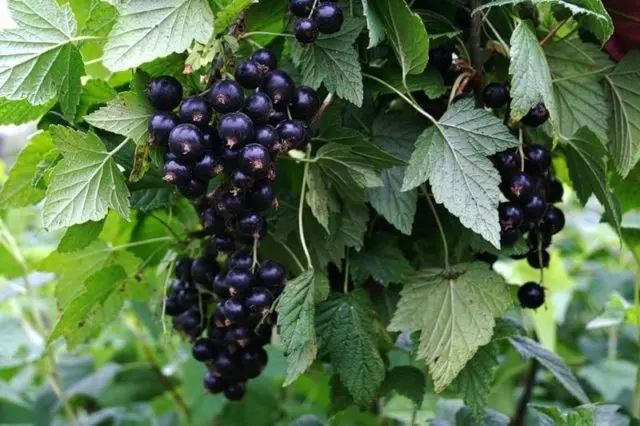
Groundwater near the bushes should lie no higher than 1 m below the surface of the earth. If they pass closer, then the soil in the area with the fruit crop will turn out to be swampy, and it is unlikely that it will be possible to dry it artificially.
How to prepare the land for currants
Before planting blackcurrants in open ground, the site must be carefully prepared.
- First of all, you need to clear the soil of any weeds – extraneous vegetation in the area with currant bushes will take away the strength of the shrub and prevent its growth.
- Before planting the crop, you need to dig up the soil – remove the top 50 cm of the earth, pour complex mineral fertilizers and organic matter into the soil, and then return the removed soil to its place. It is recommended to do this in advance, even in the fall, before planting the crop in the spring.
Distance between currant bushes when planting
Since blackcurrant grows rapidly in diameter and grows branched roots, when planting seedlings in groups, recommendations regarding the distance should be followed. There are several options for planting currants in the spring.
- If blackcurrants are supposed to be planted in single bushes in a row or in a checkerboard pattern, then the distance between the currants during planting should be about 2 m.
- If you need to plant several bushes at once, then 1 m of free space is left between individual seedlings, and when planting currants in rows, an indent of 2 m is made between them.
- If you need to plant a whole currant garden on the site or form a decorative group, the distance between the bushes can be left no more than half a meter.
In the latter case, the bushes will not grow so tall and sprawling. However, this disadvantage will be balanced by high yields in a small area.
How to plant blackcurrants in spring
The algorithm for planting blackcurrant with a bush in spring looks quite simple.
- First of all, planting pits should be dug in the selected area, their depth should be about 40 cm, and their width should be about 50 cm. Traditionally, only one seedling is lowered into each hole, so the number of pits should correspond to the number of shrubs.
- If the soil has not been fertilized yet in the fall, then it will need to be fertilized a couple of weeks before the direct planting of the shrub, 100 g of superphosphate in granules, 60 g of potassium and about 8 kg of manure per square meter are added to the soil. After laying fertilizers, the hole must be watered abundantly so that top dressing can quickly soak into the soil.
- During planting in the spring, blackcurrants should be placed in a prepared hole at a slight angle and sprinkled with soil on its roots. You need to plant a bush with a deepening of the root collar by about 6 cm.
- The hole covered with soil is slightly crushed, and then about 5 liters of water are poured into the near-stem circle of the seedling.
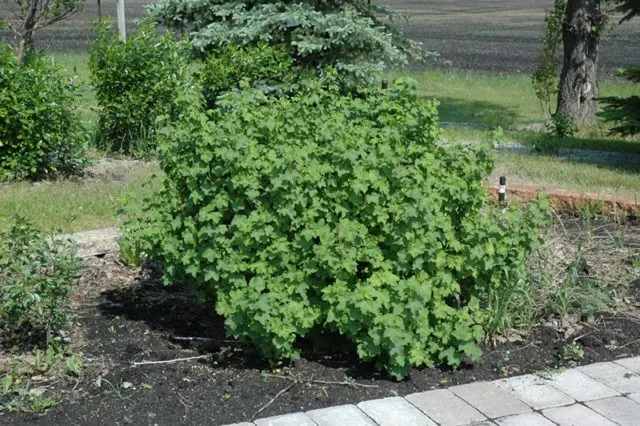
After watering, the ground next to the bushes in the spring can be mulched. A dense layer of mulch will not only prevent the soil from drying out, but also insulate the root system in case of return frosts.
What to plant between currants
Since the recommendations for planting currants in the spring advise leaving gaps between the bushes, the gardener subsequently faces the question of how to fill the remaining space. Strawberries and strawberries grow best next to fruit crops. They have similar requirements for soil and moisture levels, and the root system of low berry bushes does not interfere with the growth of currant bushes.
Onions and garlic can also be planted close to the crop in spring. Edible plants not only feel good next to fruit bushes, but also bring practical benefits. Their pungent odor repels some pests, such as the bud mite, which can greatly reduce yields.
What can be planted next to blackcurrant
Certain recommendations must be followed when planting other shrubs next to blackcurrants. It hardly tolerates some neighbors, but with others it grows very well side by side.
Favorable neighbors for blackcurrant will be two crops.
- Yoshta is a cultivated hybrid of currant and gooseberry, which is characterized by increased endurance and similar soil requirements. Yoshta is very rarely affected by pests, if you plant a shrub next to a currant crop, this will not harm the health of the plants.

- Honeysuckle – currant bushes and honeysuckle are similar in chemical composition, they are distinguished by the same unpretentiousness and high frost resistance. It is very convenient to grow them nearby.

An apple tree successfully adjoins blackcurrant, the tree can be safely planted next to fruit bushes. Plants are neutral to each other and develop well in close proximity.
Is it possible to plant currants and gooseberries next to each other
At first glance, gooseberries seem to be a very good neighbor for currant bushes, even the berries are a bit similar to each other, except for their size. However, in fact, planting gooseberries in the spring next to the crop is categorically not recommended.
The fact is that shrubs often suffer from the same pests, for example, gooseberry moth. Accordingly, with close planting, the risk of infection of both plants increases significantly.
Is it possible to plant currants next to cherries
Juicy cherries are another unwanted neighbor for blackcurrants. First of all, cherry trees and currant bushes have different requirements for the soil, so they cannot develop normally in one area. If you plant plants in close proximity, then either one of them, or both, will begin to bear fruit worse and stop developing.
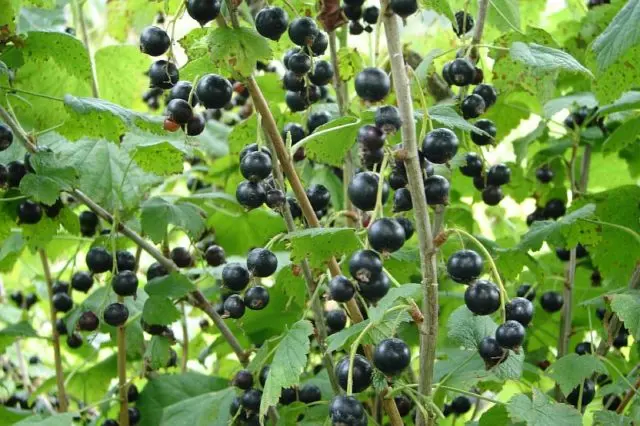
Is it possible to plant currants next to raspberries
Raspberries are plants that prefer to grow alone, so planting a shrub next to blackcurrants is definitely not worth it. Raspberries grow very strongly on the site and have a depressing effect on neighboring crops – they deprive them of space and sunlight. In addition, raspberries need a lot of water, it will take away moisture from currant plantings, which will negatively affect the growth of the latter.
When the buds wake up on the currant
Black currant is one of the first crops that begins the growing season in spring. As a rule, the buds on the shoots of the plant appear in early or mid-April, depending on the timing of the establishment of warm weather. In the southern regions, culture awakens even earlier – already in March.
How currant blossoms
The timing of flowering depends on the region in which blackcurrant grows. In the middle lane, the plant usually produces flowers in mid-May, at an average daily temperature of about 15 ° C. In the northwestern and northeastern regions, flowering may be a little late, until the end of May. In the south, the shrub can produce flowers in the spring in early and mid-April, as soon as the temperature during the day averages above 10 ° C.
Flowering continues for quite a long time – from 10 to 23 days, and with a slight cold snap, the shrub blooms longer. The flowers themselves of the plant are rather modest – small in size, white-yellow or white, soft.
When does the currant begin to bear fruit after planting?
The first crops from blackcurrant after planting in the spring do not have to wait long. With proper agricultural practices and careful care, the culture bears fruit the very next year after planting.
The blackcurrant reaches its highest flowering in a few years. The most abundant harvests from it can be harvested from the age of 4.
How much does blackcurrant grow
The average lifespan of a culture is about 15 years, the same amount of time the plant bears fruit. This is also why you need to carefully choose a site before planting currants in the spring; the shrub will remain in one place for quite a long time.
What frosts can currants withstand?
Currant bushes are considered frost-resistant – it is not for nothing that fruit crops are successfully grown even in Siberia. In winter, plantings are able to calmly endure temperatures up to -35-40 ° C in the presence of shelter. And in the southern regions and the middle lane, the plant can not be covered at all if frosts are expected not lower than -15 ° С.
With regard to return frosts, the buds of the culture survive in spring at temperatures up to -5 ° C. Blooming flowers will endure a cold snap of up to -3 ° C, and the ovary will remain on the branches at a temperature of – 2 ° C.
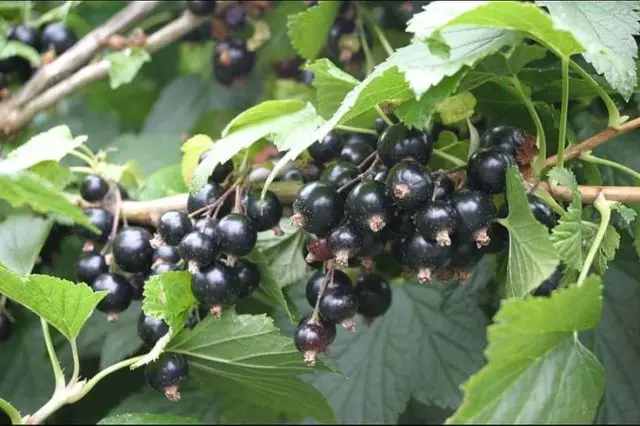
Mistakes when growing currants
Some gardeners complain that the weather-resistant and unpretentious horticultural crop refuses to bear fruit or yields too low. Usually the problems are related to the violation of the basic rules regarding how to plant in the spring and grow shrubs.
A few of the most common mistakes can be listed.
- Insufficient watering. You can often hear the opinion that a shrub is able to get by with a natural amount of moisture, but this is not true. With a lack of water, the crop slows down growth, the yield drops, and the berries become smaller and less tasty. Ideally, you need to water the bushes at least three times per season, at the end of May during the period of active fasting, during ripening and immediately after harvesting.
- Lack of fertilizer. Even if the soil is carefully fertilized before planting shrubs, over time, nutrients disappear from the soil. To maintain the health of the plant, it is necessary to apply top dressing annually, nitrogenous in late spring, potash and phosphate after harvest, and organic in the fall, before the onset of cold weather.
- No pruning. Blackcurrant grows and thickens quite quickly. As a result, young shoots receive less moisture, sunlight and nutrients, so yields are noticeably reduced. In order for the plant to bear fruit well, it must be pruned annually – old thick shoots are regularly removed from the shrub, thereby ensuring continuous rejuvenation of the fruit crop.
The lack of preventive treatment from pests and fungi becomes fatal to the yield of the shrub. A particular threat to the plant is powdery mildew, rust, white spotting, as well as moth, aphids and bud mites. During each season, the shrub should be regularly inspected for lesions and not planted next to crops suffering from the same pests.
Since pests and fungus on blackcurrants are quite difficult to cure, it is better to carry out prevention in the spring – treat the bushes with insecticides and fungicides, regardless of the presence of pests on the leaves and shoots of the plant.
Tips from experienced gardeners about planting currants in spring
In addition to following the standard rules for planting and growing, you can use special tricks. According to experienced gardeners, if you plant blackcurrants in the spring according to these tips, then the yield of the plant can be increased.
- Immediately after planting the seedling in the spring, it is recommended to prune it slightly. All shoots are shortened so that no more than 4 buds remain on the branches. After such pruning, blackcurrant begins to actively develop the root system, which means that it quickly strengthens in the ground and begins to bear fruit well the next year.
- Not all varieties of blackcurrant are self-fertile, some need pollination by other varieties. And even self-fertile varieties produce more abundant crops when pollinated. Therefore, ideally, several plant varieties should be planted nearby in the spring for high-quality pollination, then there will be more fruits on the shrub.

Despite the fact that traditional agricultural technology recommends planting 1 bush in 1 hole, many summer residents violate this rule. According to the observations of experienced gardeners, blackcurrant bushes grow more powerful and capable of abundant fruiting if 3 seedlings are planted in a single hole at once. Sometimes the crop after that grows 2-3 times compared to bushes planted using conventional technology.
Conclusion
It is necessary to plant currants in the spring according to the established rules, at the right time and in good soil. If initially comfortable conditions are created for the plant, then it will grow better, and it will be possible to harvest more plentiful crops from blackcurrant.











